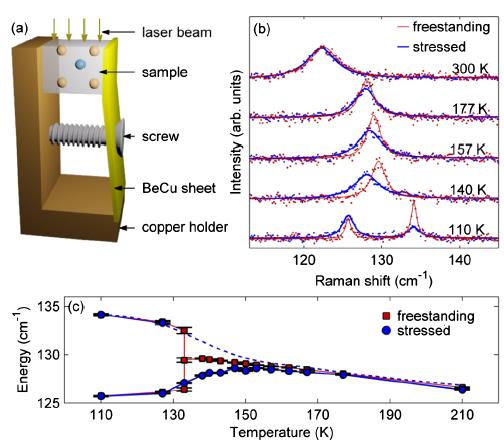ICQM faculty member publishes an article in Physical Review Letters reporting ‘Nematic Crossover in BaFe2As2 under Uniaxial Stress’
In the phase diagram of iron-based superconductors, superconductivity is commonly situated near the vanishing point of the phase boundary between tetragonal and orthorhombic crystal structures. This commonality has invoked major research efforts to elucidate the nature of the so-called nematic phase, in which the discrete C4 rotational symmetry is lowered into C2 but the lattice translational symmetry is intact. The exact onset temperature of spontaneous nematicity, Tnem and, in particular, whether Tnem is simply the orthorhombic structural transition temperature Ts or is even higher, has been a subject of intense research interest and debate.
Recently, Prof. Yuan Li and his PhD student Xiao Ren, undergraduate students Lian Duan, Yuwen Hu and Jiarui Li published a paper titled ‘Nematic Crossover in BaFe2As2 under Uniaxial Stress’ in Physical Review Letters115, 197002 (2015). The work was done in collaboration with Prof. Pengcheng Dai’s group at Rice University, USA and the Institute of Physics, Chinese Academy of Sciences, where high-quality single crystals of BaFe2As2 were synthesized. Through systematic measurement of Eg phonon splitting as a function of temperature using high-resolution Raman spectroscopy, in both freestanding and uniaxially-stressed BaFe2As2 single crystals, it is revealed that (1) modest uniaxial stress on the order of a few MPa changes the phase transition at Ts into a crossover that spans a considerable temperature range above Ts, and (2) a hard-to-avoid distribution of residual stress of the same order of magnitude remains in nominally freestanding sample, causing similar crossover phenomena that can be easily mistaken as a separate phase transition above Ts. The results indicate a lack of genuine phase transition at T > Ts.
Compared toprevious experimental attempts on resolving this issue, most of which required the use of single-domain samples produced under external stress, this is the first time to use Raman scattering, which can detect spontaneous point-group symmetry breaking without resorting to single-domain samples, to investigate the phase boundary of the nematic order in detail. The work provides strong evidence for a non-negligible influence of stress, either externally applied or residual in realistic samples, on the phenomena that are seemingly indicative of C4symmetry breaking, hence establishing the existence of only one true nematic phase transition in the phase diagram.
The work was supported by the NSF of China (Grant No. 11374024) and the NBRP of China (Grant No. 2013CB921903).

Figure: Raman spectroscopy can detect point-group symmetry breaking without resorting to single-domain samples. In the above figure, it is shown that upon application of a uniaxial stress on a BaFe2As2 crystal, phonon energy in Raman spectra obtained near the transition temperature Ts changes significantly, contrary to a commonly used assumption that the uniaxial stress only ‘detwins’ the sample without altering the physics. The observed behavior is typically found when a sharp phase transition becomes a broad crossover under a polarizing field.